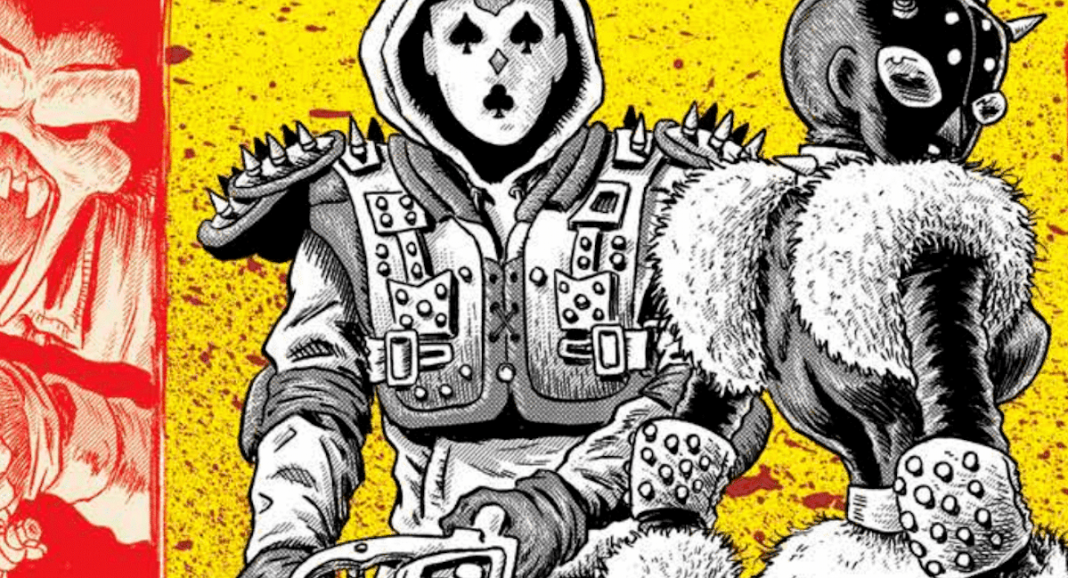Ed Piskor is the ultimate cartoonist’s cartoonist. An auteur with a highly developed and distinctive style, Piskor has been part of a modern vanguard of alternative creators who take on every aspect of their work. From writing to lettering, coloring, and being the ultimate arbiter of what goes into the final project, Piskor’s comics stands out on their own as singular contributions to the medium.
Now, after years of working on projects that are based in history and already-established mythology, Piskor is venturing out to launch a brand new story. And for those readers wondering where he would go after spending time with the founders of Hip-Hop and marvelous mutants, the answer is… the visceral horror of murder for profit found on the dark web.
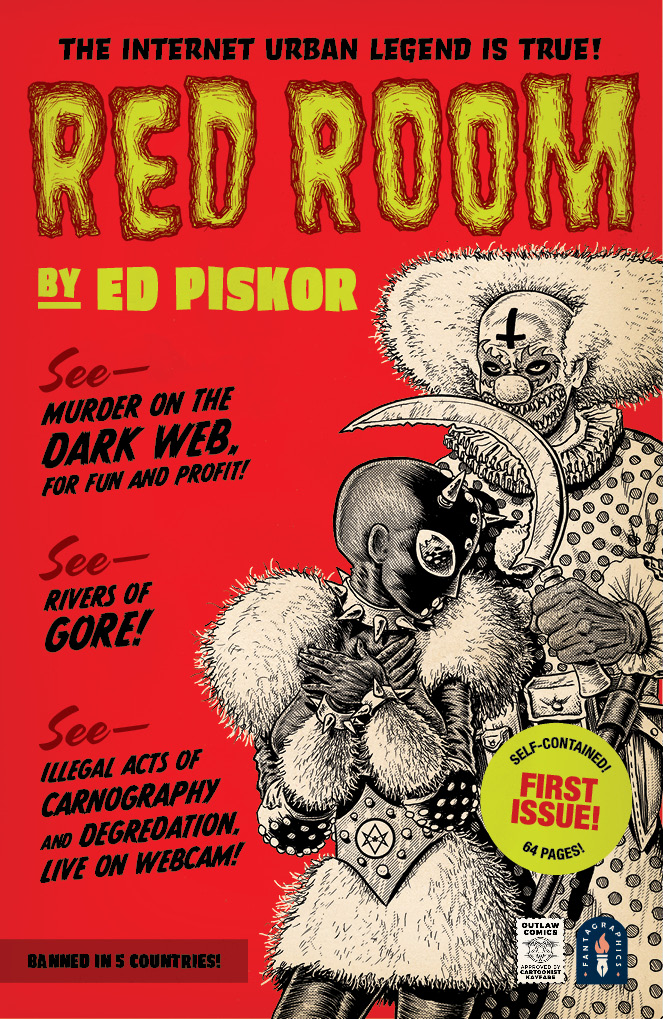
When it launches next month from publisher Fantagraphics, Red Room will introduce readers to the sordid and disturbing (and hopefully fictional) subculture of murder rooms located in the remotest parts of the internet. These places of death—dubbed ‘red rooms’—and the shadowy characters who perform the gruesome acts are brutal exhibitions that will probably stretch the limit of taste for most readers. In all respects, the new book embodies its ethos as an “outlaw comic,” a class of books that Piskor used as inspiration for Red Room
For those who enjoy transgressive work that push boundaries and explores the vast potential of art, then Red Room will likely satiate with its unique twist on horror and shock tropes. Recently, I had the opportunity to chat with Piskor about the release of Red Room, where I asked about the definition of an outlaw comic, how it felt working on a new, original story, and whether being an auteur is truly a limitless pursuit for a cartoonist.
AJ FROST: Hi Ed! It’s so nice chatting with you again. Before we get to your new book, I wanted to start by asking how you’ve been during the pandemic. It seems you’ve been productive, but did the pandemic alter your work style in anyway?
ED PISKOR: Little has changed for me in many ways since the pandemic began. I’ve had less friends join me in the studio to draw all day and night but I’ve supplemented it with Zoom sessions while drawing. I’ve become comfortable with it, actually.
FROST: Between shooting, editing, and producing new episodes of Cartoonist Kayfabe and working on various projects, how do you find the time to slow down and create comics?
PISKOR: It’s kind of the other way around. I spend six days a week steady grinding on comics and I squeeze Cartoonist Kayfabe into the mixture. The Youtube channel has been an extremely valuable resource for us and it’s woven comfortably into my regular practice. In a lot of ways, the Youtube channel was a godsend when the pandemic hit. It gave myself a fun goal for each week, provided a few hours respite in the midst of chaos, and gave me the excuse to hang out with a homie and talk shop. We’ve gotten tons of feedback from the audience and how they’ve enjoyed the few hours of content each week during all the insanity we’ve endured in 2020. It works both ways.
FROST: What was the inspiration behind Red Room? What made you want to explore this dark world of murder for pleasure and profit?
PISKOR: I was reading Stephen King‘s Danse Macabre, where he lays out all of his multimedia horror influences from over the years: novels, comics, TV, radio, film, etc. One thing was abundantly clear about all of his favorite inspirations: when they were released, they exploited the zeitgeist. Something new was in the ether when those works came out—ranging from the atomic bomb to suburban conformity. It made me think in the direction of “What are some cool horrific possibilities in this modern day that couldn’t have been thought of even a few years into the recent past?” The dark web—and the idea of an internet that is ungovernable—seems rife with great, scary possibilities. Heck, people do ridiculous shit on the regular internet with little regard. Imagine an internet where one faces no consequences while within that system.
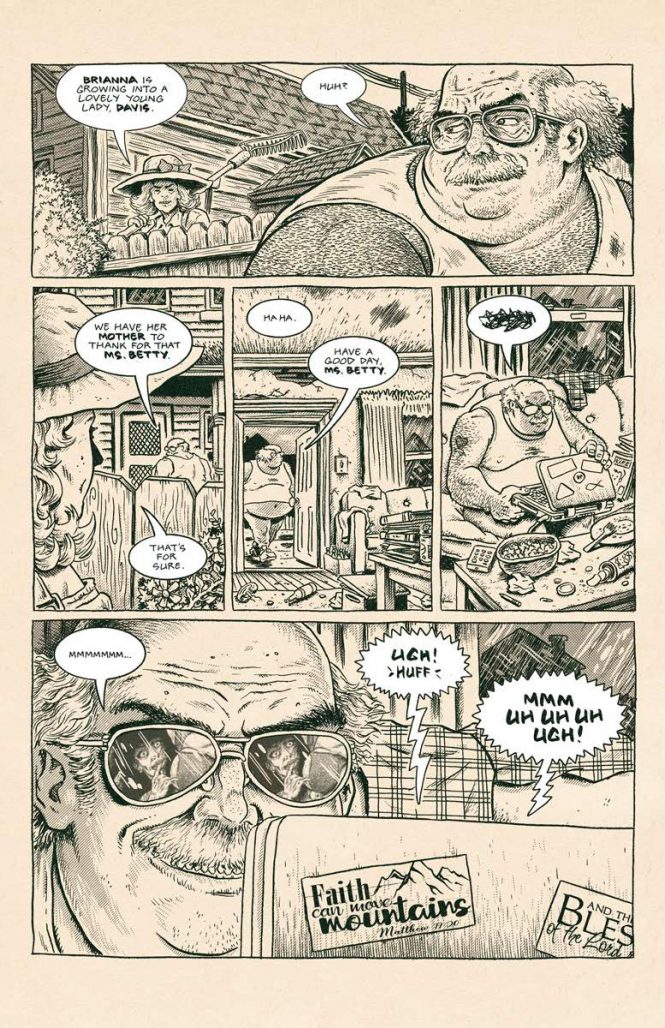
FROST: Can you define what an “outlaw comic” is? What interests you about this little-recognized (or is it little-appreciated?) sub-genre of the medium?
PISKOR: Years ago, I posted something online showing some of my favorite comics like Faust, The Crow, some of Ken Landgraf‘s work, early Troy Nixey, Joe Vigil, Vince Locke, and I said something like: “These are all part of the same family but what do we call it?” Someone reminded us that the term “outlaw comics” was used to categorize them back in the day (in a fairly faint way). [The term] never really caught on, but it seemed like a perfect name to me. These people don’t fit into any other space. The mainstream won’t use them because they’re not slick and corporate looking. The academics and artsy fartsy people dismiss the material on the face of the stuff. These are “young adult” comics as much as the baby food they’re serving on the shelves. I loved that stuff as a kid and wanted to try my hand at it. Comics have gotten the respect it sought for decades and the medium doesn’t have all that much to show for it. Let’s get some vulgarity back on the racks. Remind everyone what got a lot of us interested in comics in the first place.
FROST: Red Room seems like new narrative territory for you, seeing as how your last two projects were based on history or already-established characters. Were you excited for the challenge of a completely new universe?
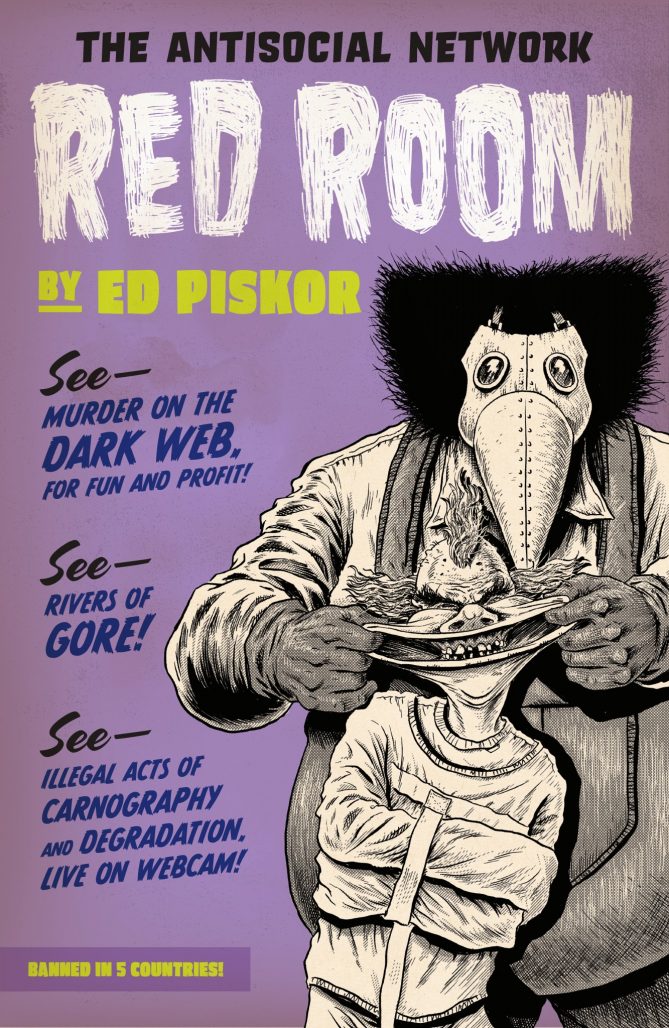
PISKOR: Yeah. Doing Hip Hop Family Tree was a world-building exercise on rails: Dealing with real people there wasn’t much room for imagination. X-Men: Grand Design was world-building with some room to play. It was all gearing up to create this exact situation I’m in now, where I’ll be making new comics of my own every year. Red Room is the culmination of an earlier five-year plan, so now I have to build toward the next big set of goals.
FROST: You’re among the rare cartoonists who truly can take an auteur approach to work. At times, do you feel that this form of freedom works in your favor? Or do you like to put limitations on yourself to keep your work honest and fresh?
PISKOR: Red Room is an exercise in limitation, a monthly comic without the help of anyone else. I wanted to put myself through the rigors of the guys who used to grind out twenty-two pages every thirty days just to see what it’s like. Next project I might try to do four panels a day for a year like the classic newspaper strip cartoonists; it’s all just an exercise for me. The final printed books are my past the second they come out.
FROST: I’m not going to lie, Red Room is extreme and brutal. What would you want a prospective reader to understand before opening up an issue and getting lost in the dark world building you have here?
PISKOR: My warning to potential readers is all in bold type on the front cover of issue #1.
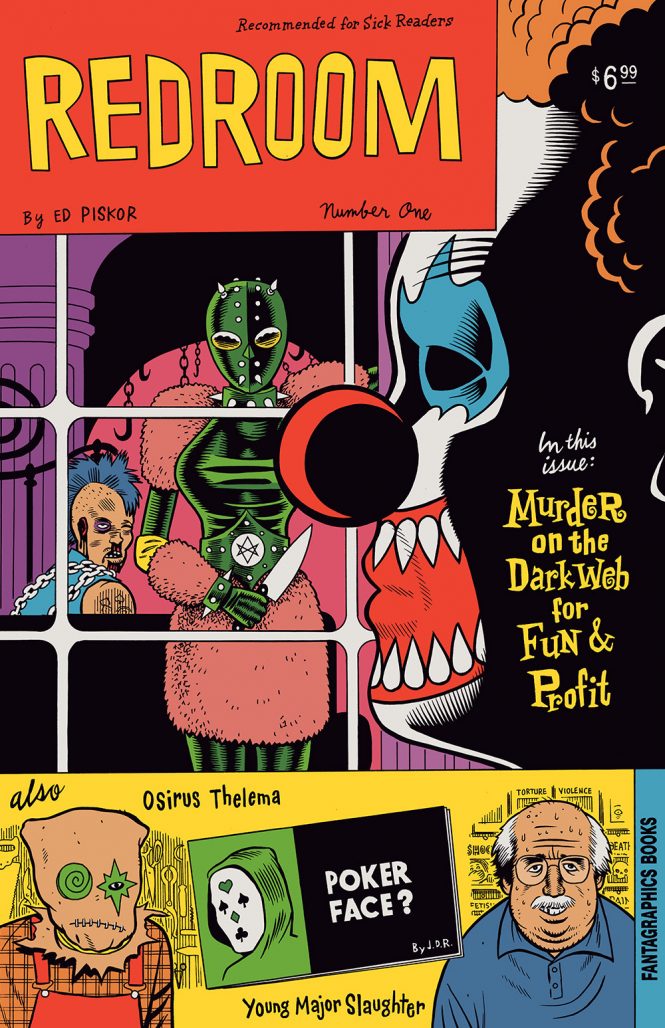
Red Room #1 by Ed Piskor will be available May 19, 2021 from Fantagraphics. Follow Ed on Instagram and Cartoonist Kayfabe on YouTube.


